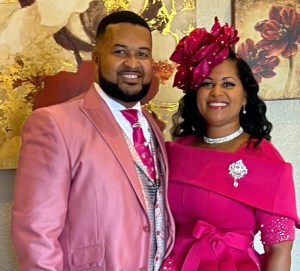CHRISTUS using quick response program to treat stroke patients with highest standards
Published 12:28 am Wednesday, September 28, 2022

- Viz.ai technology is an artificial intelligence program linked to imaging services already in place. (Courtesy photo)
|
Getting your Trinity Audio player ready...
|
CHRISTUS Southeast Texas St. Elizabeth, St. Mary Mid-County and Jasper Memorial Hospital are improving treatment for stroke patients with the success of the CHRISTUS Southeast Texas Stroke Program and their use of technology.
The program offers the most current approach to treating stroke patients and meets the highest standards of safety goals and standards, official said.
Two critical elements of the program include the use of TeleSpecialists TeleStroke, a neurology telemedicine service, and the newly implemented Viz.ai technology, an artificial intelligence program linked to imaging services already in place.
Trending
The neurology telemedicine services, TeleSpecialists TeleStroke, provide patients with 24/7 emergency access to neurologists with experience treating strokes.
This technology offering begins as soon as a patient with stroke-like symptoms goes to the emergency room in an ambulance. This is when a hospital-wide Stroke Alert can be issued.
The clinical team stands by and deploys video conferencing technology through TeleSpecialists TeleStroke, which connects them to a board-certified neurologist.
Mounted on a mobile cart, the telemedicine technology allows a neurologist to participate in all aspects of the neurological exam — from the CT scan to the physical exam and patient interview — before recommending a course of treatment.
“Our patients receive the care they need incredibly fast. With a collaborative approach, a tele-neurologist is on screen and ready to evaluate the patient within minutes of any consult request,” said Brenda Hatch, RN CHRISTUS Southeast Texas Hospital-St. Elizabeth Hospital Program Manager and Stroke Coordinator. “We are ready to take care of our stroke patients here in Southeast Texas and are passionate about saving lives.”
Viz.ai is also a critical and beneficial resource in the Stroke Alert process. Viz.ai, known for its Intelligent Care Coordination platform, improves multidisciplinary care team communication and offers high-fidelity mobile image viewing as well as detailed patient information, including real-time status changes.
Trending
A patient’s stroke symptoms might include the detection of a large vessel blockage. That is information Viz.ai picks up instantaneously, then this information gets deployed to renowned physicians at various comprehensive stroke centers in Texas.
If necessary, a patient transfer can be initiated.
The CHRISTUS Southeast Texas Health System is the first in the Southeast Texas Region to implement Viz.ai, hospital leader said.
“This is a cutting-edge and life-saving technology that’s making a difference in the lives of many here in Southeast Texas,” CHRISTUS Southeast Texas Health System President and CEO Paul Trevino said.
“We’re giving people a second chance at life, a smoother recovery and ensuring we have the modern technology and resources available for all those we have the privilege to serve.”
Stroke Facts by the Numbers:
- 5th leading cause of death and disability;
- 400 stroke patients is average number treated each year at CHRISTUS St. Elizabeth;
- 3 hours from the onset of symptoms is the window of time in which a clot-busting medication can be given for a better chance of recovery;
- 45 minutes is the national standard of time in which a patient, once arriving at the hospital, should be diagnosed and administered a clot-busting medicine like Alteplase;
- 35 minutes is the CHRISTUS Southeast Texas St. Elizabeth Hospital’s year-to-date time in which a patient comes in the door and receives medication. It is 10 minutes below the national goal.
Understanding
Understanding and being aware of the warning signs of a stroke — as well as acting F.A.S.T. — could save a life and make a recovery easier for the survivor.
These are key checkpoints:
Balance — Is the person leaning to one side or staggering when walking?
Watch for a sudden loss of balance.
Eyes — Is there a sudden loss of vision in one or both eyes? Double vision that doesn’t go away when the person blinks their eyes? Check for signs vision loss.
Face drooping — Is one side of the face dropping? Look at their eye, cheek, or lips to check for any unusual asymmetry or droopiness.
Arm weakness — Is the person experiencing arm weakness? Ask them to raise both arms to shoulder height and check for one arm that seems lower than the other.
Slurred speech — Is the person’s speech slurred, or are they speaking in an unintelligible way?
Call 911 — It’s time to call 911 or your local emergency services. Be sure to tell them you think it’s a stroke.
Other important warning signs to be aware of are:
- The person seems to be having trouble understanding you or speaking coherently.
- The person appears to be confused, have trouble seeing or walking.
- The person is experiencing a painful headache.
- The person is experiencing numbness on their face, arm, legs, or a specific side of their body.






